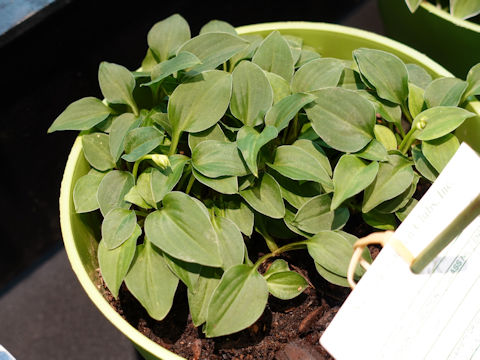 |


|

|
íªÌ{BAºÉ§È¼©çlEãBA»êÉ©N¼ÉªzµÄ¢Ü·BRnÌâêɶ¦A³ÍSO`UOZ`ÉÈèÜ·BtÍóÈ~`ÅAæ[ÍëèÜ·BU©çV²ëAÔsðLεÄAWFÌóÔðæ[ÉÜÆÜÁÄ穹ܷBa¼ÍAÔsÌæÉWÜÁÄçpªAâÏi©ñ´µjðAz³¹é±Æ©çB
|

|
ÈM{EV®ÌíνNÅAw¼Í Hosta capitataBp¼Í èܹñB
|

|
"Kanzashi-giboushi" (Hosta capitata) belongs to Liliaceae (the Lily family). It is an evergreen perennial that is distributed from Hyogo Prefecture of Honshu and westward to Shikoku, Kyushu in Japan, and the Korean Peninsula. It grows on rocky terrain in the mountains and grows 40 to 60 cm tall. From June to July, it grows flower stalks and produces light purple tubular flowers in clusters at the tips. The Japanese name comes from the appearance of the flowers clustered at the tip of the flower stalk, which reminds "Kanzashi" (Japanese ornate hairpin).
|

|
AJEelV[ButBXA¨vÉÄA2022N0709úBeB(photo by Jon Suehiro)
|
